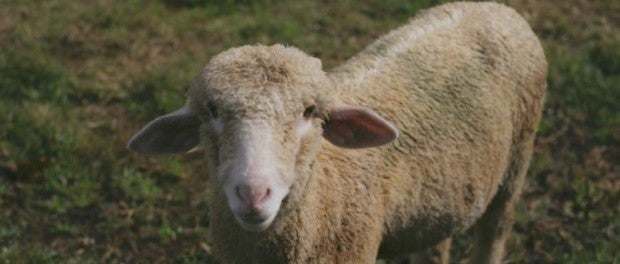Getting Started with Sheep

An animal that doesn’t seem to come up with the same frequency as other livestock is the sheep. Though many of us are more accustomed to seeing chickens, goats, and cows on the farm, sheep have a place there as well. In fact, the versatility of sheep makes them quite the well-rounded addition to any farm. Whether you want milk, meat, or wool for clothing, the sheep is the animal for all of those jobs.
In order to get started with sheep, you will first need the facility to house and feed them. Sheep need good pasture with sturdy fencing (ideally electric as this helps with predators) to keep them contained along with an area to separate them for medical care, sheering, etc. They also need access to readily available water and a clean, dry place to eat. In areas where cold weather dominates, barns will be necessary for housing expectant ewes and newborn lambs.
As far as feeding goes, pasture can be relied on quiet heavily to the tune of about 1 acre to 4 ewes/lambs. Supplementing pasture with hay in winter is necessary as is the addition of grain. The amount sheep are fed will depend on what their purpose is. For example, wool sheep and milk sheep have more stringent nutritional needs than meat sheep and they will therefore need to be fed according to purpose. Regular salt and minerals are needed as well.
Once you’ve established an area to keep sheep and how you will care for them, it is time to decide what you want to get out of your sheep experience. Is it wool, milk, or meat that you prefer? Breed selection should be based on the answer to that question. If milk is your goal, some of the preferred dairy breeds are the East Freisian and Lacaune or crosses including these breeds that have resulted in the Dorset, Polypay, and Tunis. If you are seeking wool, your options include Border Leicester, Columbia, Cotswold, Lincoln, Merino, Rambouillet, and Romney. Meat sheep breeds to consider are the Droper, Hampshire, Katahdin, Montadale, Suffolk, and Texel. Of course there are other sheep breeds that might suit your tastes, but looking into these to determine your preference makes for a good jumping off point.
Now that you know what type of sheep you wish to bring home, it’s on to the business of buying. Having a person with sheep experience is helpful especially if you are sheep shopping for the first time. However, what you want to see is pretty consistent across the board. For starters, ask around to other sheep farmers you may know in order to find an honest, reputable breeder. You also want a breeder that is willing to answer your questions and readily shares health information and records with you. They should welcome you at their farm, which should be clean and well kept. You want to see healthy, robust sheep, as opposed to those that appear to be failing in health. Take your time and make your sheep selection carefully.
Upon bringing your sheep home, you are going to want to take steps to prevent predation. Though some sheep can be quite large, that does not necessarily mean they do not have a target on their backs when it comes to coyotes and other large predators. In order to protect sheep, it is good to have a livestock guardian dog on the payroll, such as a Great Pyrenees or Anatolian Shepherd. Guard animals don’t stop at dogs, however, and you can also employ an adequately sized donkey to get the job done; mini donkeys are cute but not always large enough to defend against some predators.
Although getting set up for sheep may seem like a lot of work, they are versatile animals that can be an asset to any beginning farm. Both the meat and milk are nutritious and the wool will keep you warm or it can be sold to keep someone else warm instead. If there were ever an animal that had all the bases covered, surely the sheep is it!








 Your Privacy Choices
Your Privacy Choices
Leave a comment